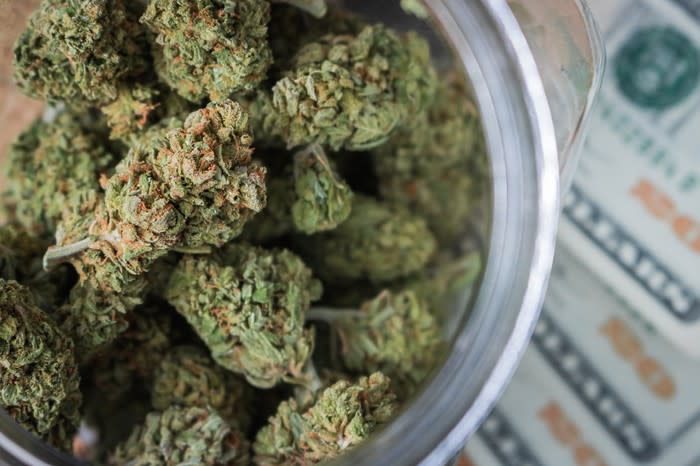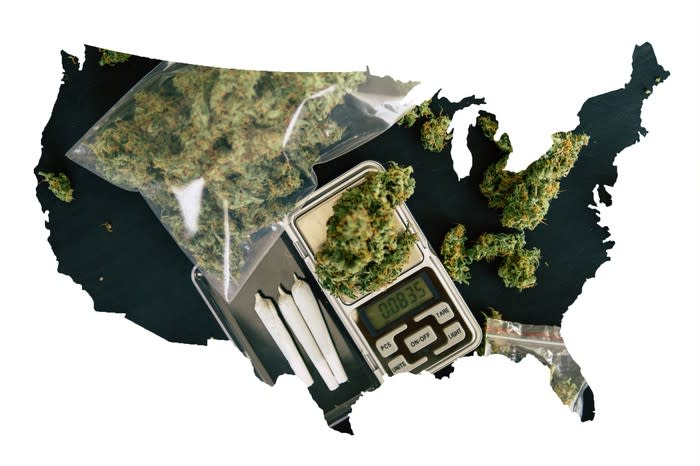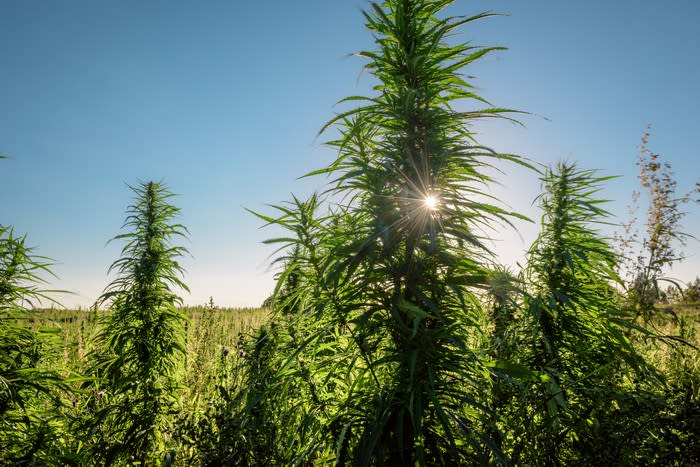Wholesale Cannabis Prices Are Rising in Established U.S. States -- Here's Why
Over the next decade, investors will struggle to find a more impressive growth opportunity than the rise of legal cannabis. If investment bank Stifel proves accurate with its call for $200 billion in global annual weed sales in a decade's time, the industry would be on track for a compound annual growth rate of almost 34%. That makes marijuana hard to ignore.
Unfortunately, it's made the rise of cannabis hard to ignore from a business perspective, too, especially in the United States. The U.S. is projected to generate between a third and a half of worldwide weed sales in a decade. With such incredible growth expected, growers have come out of the woodwork in established recreationally legal U.S. states for their piece of the green rush.
The problem is that established adult-use-legal U.S. states, such as Colorado, Washington, and Oregon, have encountered serious oversupply issues as a result of everyone wanting in on cannabis.

Image source: Getty Images.
Oversupply has crippled established legal weed states in the U.S.
In Oregon, for instance, the Oregon Liquor Control Commission (OLCC) announced in late May that it would temporarily stop processing license applications as of June 15. According to the Portland Business Journal, Oregon had 1,001 licensed growers as of May 23, with another 847 "assigned applications" and 477 "ready for assignment" applications in queue. Note that these additional applications could be for growing, processing, distributing, or selling cannabis.
Nevertheless, without a cap on growing licenses, it's been a Wild West of sorts for marijuana production in the Beaver State, with the OLCC noting in January that there was enough supply on dispensary shelves, in processing plants, and in warehouses to meet demand in the state for six years.
Even established states that cap the number of growing licenses issued have faced dried flower oversupply concerns. That's because there's often no limit to how many plants a licensed grower can have, or how much supply a grower can produce in its allotted square footage.
You can also blame high tax rates in select states for oversupply concerns. Select locales in California are facing combined state, local, excise, and wholesale tax rates of as high as 45%, while marijuana consumers in Washington state are on the hook for an aggregate tax rate of 37%. Since black-market producers don't pay any sort of federal, state, or local taxes and don't have to wait for state regulators to approve the growing, processing, distribution, or sale of weed, they've been able to slow the transition of consumers to legal channels, worsening the legal-grown oversupply.
All of these reasons summarize why wholesale cannabis prices have fallen off a cliff in Colorado, Washington, and Oregon since legal sales first began.

Image source: Getty Images.
Say what? Wholesale marijuana prices are rising in mature adult-use states
However, a new report from investment bank Seaport Global, as reported on by Marijuana Business Daily, reveals something surprising. Since mid-April, we've witnessed a reversal in wholesale cannabis pricing (on a per-pound basis) in the United States' most mature recreational markets. Seaport notes that wholesale marijuana prices per pound have risen by:
100% in Oregon
46% in Washington
17% in Colorado
How is this possible, given the issues described above?
One point outlined in the report is that some growers have gone out of business. Wholesale prices were very attractive when marijuana was first legalized for adult consumption, but years of declining wholesale prices have put a number of growers out of business. Fewer businesses should lead to less supply and a more stable pricing environment.
Additionally, growers have been holding back product with the hope that market conditions (and pricing) improve. This is similar to what Auxly Cannabis Group (OTC: CBWTF) has been doing in Canada.
Auxly, which is a marijuana royalty company and producer, recognizes that dried cannabis flower pricing has weakened since recreational weed was legalized in October. Rather than push dried flower to market, it's held back most of its supply to create derivative cannabis products (edibles, beverages, concentrates, and vapes) that'll generate much higher margins when they launch in mid-December. Growers are willing to take a sales and/or margin hit now for better margins later.

Image source: Getty Images.
Another interesting reason wholesale prices are rising is the switch some growers have made from cannabis to hemp. Hemp is a much cheaper and considerably easier crop to grow. It's rich in cannabidiol (CBD), the cannabinoid best known for its perceived medical benefits, and it doesn't get users high. With the Brightfield Group forecasting a compound growth rate of over 100% through 2023 for CBD products in the U.S., the switch makes sense.
Lastly, Marijuana Business Daily notes that this summer has featured stronger demand and weaker supply in these established states.
Don't get too excited
While it's great to see wholesale marijuana prices climbing after a precipitous decline in all three mature markets, it's far too early to suggest that pot prices have hit their trough in the United States.
For one thing, virtually nothing has been done to constrain the black market. High tax rates in Washington and no growing license application limit in Oregon should make it pretty easy for illicit producers to continue to undercut legal-channel growers on price. The simple fact that California's cannabis sales contracted the year it opened its doors to recreational weed sales demonstrates just how much of a deterrent high tax rates are on consumers.

Image source: Getty Images.
Additionally, I'd suggest that the allure of big dollar signs tied to the U.S. cannabis industry will continue to draw in new growers. Between this early-stage push for market share and high tax rates, recreational marijuana states are still likely to face dried flower pricing pressure.
For investors targeting growth in the U.S. marijuana space, your best bet is to focus on companies that prioritize high-margin derivative products, which are less likely to face oversupply and pricing concerns. An even smarter idea might be to consider extraction-service providers like Neptune Wellness Solutions (NASDAQ: NEPT), which provide resins and distillates to the North American market.
Neptune will be sporting an annual processing run rate of 200,000 kilos of hemp and cannabis biomass in Canada and 1.5 million kilos in the U.S. by year's end. Having already landed major deals with Tilray and The Green Organic Dutchman in Canada that span three years, and with U.S. CBD interest spiking, Neptune should be set to generate predictable cash flow for years to come.
More From The Motley Fool
Sean Williams has no position in any of the stocks mentioned. The Motley Fool recommends Auxly Cannabis Group. The Motley Fool has a disclosure policy.
This article was originally published on Fool.com

 Yahoo Finance
Yahoo Finance 